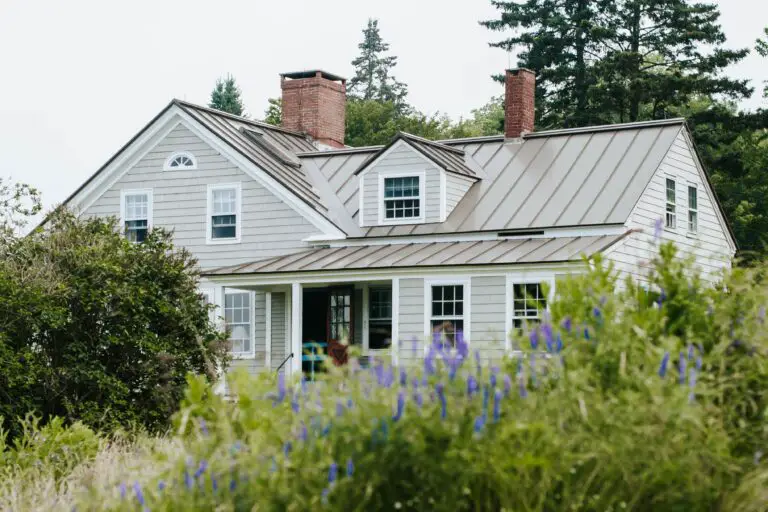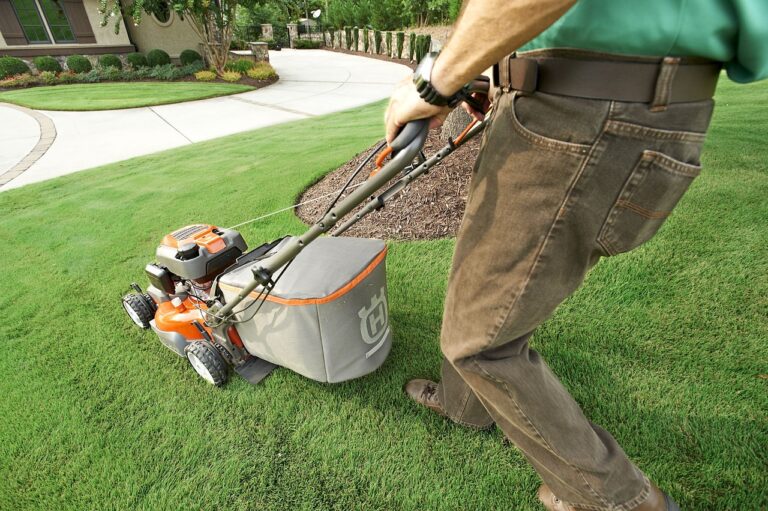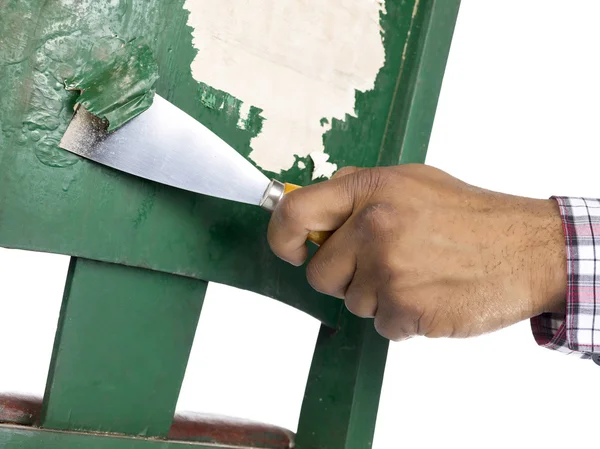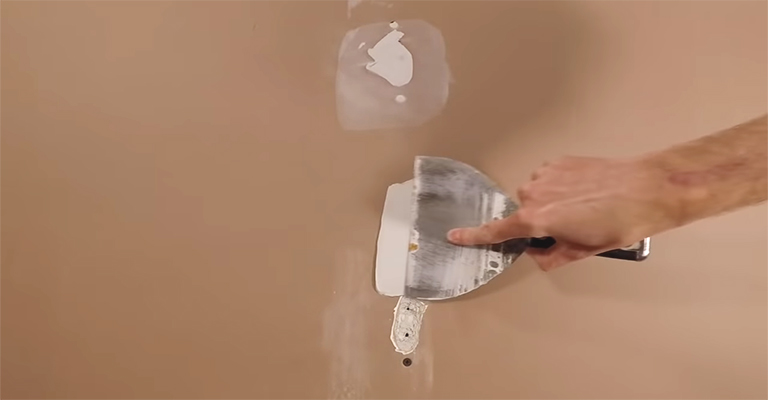How To Attach Deck Stairs To Ground?
Attaching deck stairs to the ground prevents accidents and falls. However, some people might not have the required equipment at hand for attaching their deck stairs.
In such cases, they can use a temporary solution by using a tarp or piece of carpet as an attachment point. The best way is to install a permanent connection point in your yard that can be used as an attachment point for your deck stairs.
To get down on the ground, one should go down the stairs carefully and land on their feet. The landing should be about 8 inches high, and this will make it easier for people to get down.
How Do I Go About Landing My Deck Stairs On Dirt?
The options for deck stair landing on dirt are numerous, but in general, you can choose from two main options. One is to use treated wood, or the other is to use concrete.
When a deck stair is made entirely of treated wood, it will eventually rot and need to be replaced. The best option would be to build a landing with concrete and attach the stairs later with screws or nails.
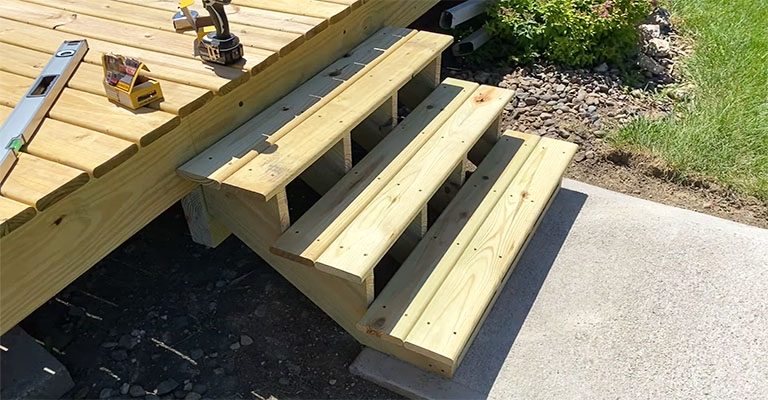
You’ll want to make sure that the ground is very dry. Then you will dig a hole in the ground that is wide enough for your stairway landing. Next, fill the hole with gravel or sand so that your deck stairs won’t sink into the dirt when they are attached.
Afterward, use wood screws or bolts to firmly attach the steps onto this gravel or sand below them, so they don’t move around while you’re walking up and down them.
How To Attach Deck Stairs To Ground?
It is always important to ensure that stair stringers land on a level and well-drained surface. You should not have a problem landing on a concrete pad or patio. However, you may decide to install pavers or fill the area with compacted gravel to enhance drainage if you are landing on the yard.
To ensure you use ground contact-rated pressure-treated wood, ensure the wood has .60 retention. To prevent frost heave, footings should be installed at the bases of the stringers.
We strongly recommend doing this even if it is not always required. In order to create a strong ground connection, use a concrete anchor, base plate, and short post as soon as your frost footings are in place.
At the bottom of all staircases, there must be a level landing area of 3′ x 3′. The ground should meet the requirements if it is level. The following steps will help you create a base if you need it.
Step 1:
Anchoring your deck stairs to concrete will help you keep them sturdy and safe. In order to do this, you need to notch out the bottom front of the center stair stringers. First, remove the stair stringers from the stair treads.
Step 2:
Next, adjust each of these stringer’s bottom front so that it is about an inch away from where it will mate with the 2×4 base plate. Then use a screwdriver or hammer and chisel to cut away excess wood from one side of the step so that it can fit in between two steps on either side.
Step 3:
The most effective way to fasten the base plate to the stair stringers is by using screws. To make this process faster, use screws that are long enough and with a washer between the screw and wood.
Step 4:
Before you start, make sure that the area is clean and dry. Use a hammer and drill to install 1/2″ x 3″ sleeve anchors through the base plate into the concrete pad. If you’re using any type of deck stairs, it would be best to use sleeve anchors.
They’ll provide more strength than lag bolts, which can easily come loose if someone steps on them while they’re underfoot. The process is similar to how you would use lag bolts – find a place where there’s already an anchor point on the foundation and drill your holes so that they match up with it.
How To Add Extra Support For Long Stair Stringers?
We recommend that if your stringers are over 10′ long, you should add a rigid beam at midspan to provide additional support. The cuts made to create stair surfaces greatly weaken the strength of stair stringers, and stairs must be able to withstand heavy foot traffic and very stressful conditions
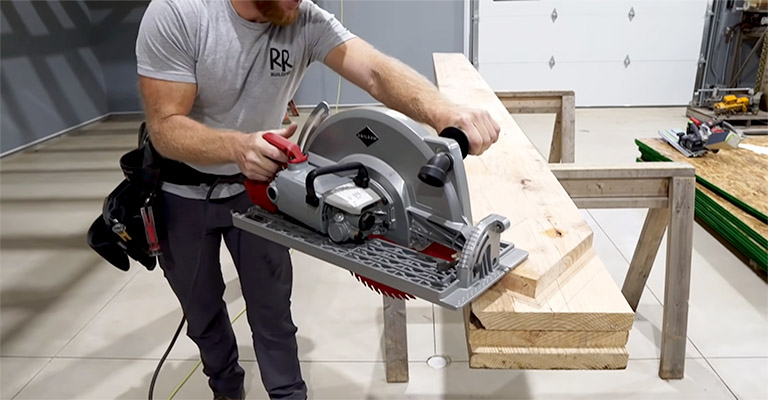
From an aesthetic and structural standpoint, breaking long stair runs with intermediate landings makes more sense. Sometimes, however, one long stair run may be enough.
As a result of a brace, the shear stress in the middle of the stringers will be dampened, preserving the strength of the stringers. The stairs on most decks are under-built and are bouncy and prone to collapse, especially if weathering has propagated cracks in the stringers.
If you wish to increase strength, you may wish to double the stringer by connecting two 2x12s like beams. In addition, you can strengthen the stair structure by adding blocking between the stringers.
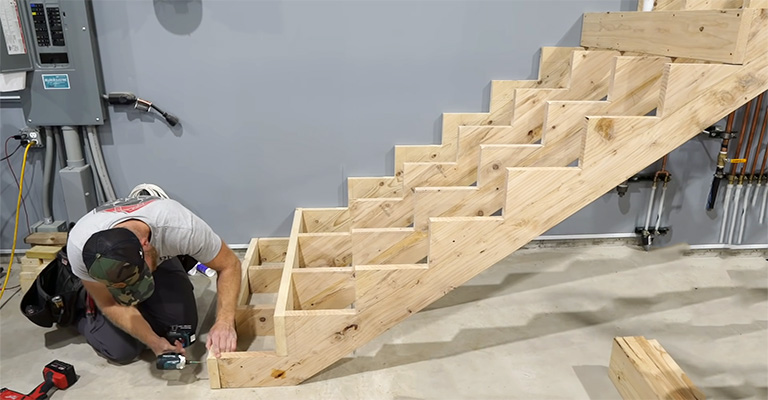
When Is It Not Necessary To Use Deck Stair Footings?
If you think that installing footings for your deck steps will be tedious and time-consuming, you may be right. There is no need for footings for deck stairs with fewer than three risers.
It is acceptable to set the stringers on concrete blocks, crushed rock, wood landing pads, or anything else that will prevent rot from occurring at the ends. But what happens if your stairs move during the winter?
There will be some movement, but not a lot. Furthermore, as long as you don’t attach your stairs’ bottoms to whatever they are sitting on, they are free to move throughout the spring and likely settle back into place.
It is important not to attach the deck stairs to the floating landing pad if your deck stairs do not have footings. When you attach them, your stairs will be highly susceptible to ground movements and frost heaves and could potentially compromise your staircase’s integrity.
Attaching The Deck Stairways To The Footings
By installing deck stair footings through the base plate, it is possible to attach the footings to concrete quickly and easily. The base plate, which is usually a 2×4, is the horizontal piece of wood attached to the stringers at the base of the stairs.
It is an excellent idea to fasten the stairs to the footings since the footings will make full contact with the baseplate width. Then, connect the stairways to the footings using anchor sleeve bolts.
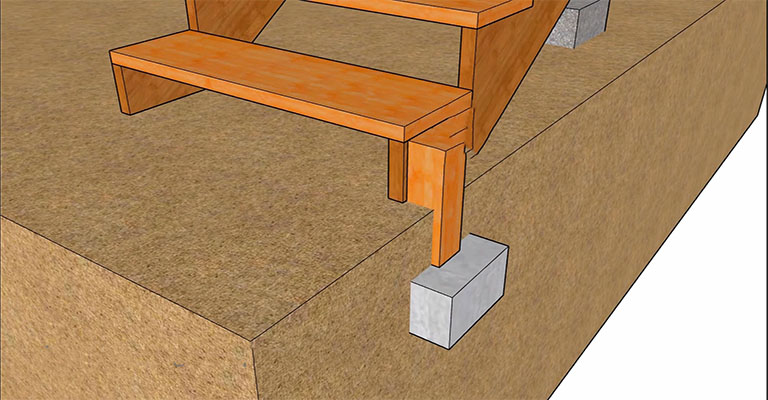
Concrete and masonry anchor sleeve bolts are special bolts designed for use with concrete or masonry. You will need a hammer drill with a drill bit that has the same diameter as the bolt. It’s recommended to use anchor sleeves that are no less than 6″ in length, with a diameter of at least 12″.
A concrete drill bit should be used to bore a hole through the base plate and into the footing. For your bolt to fully contact the concrete, drill deeper than 6″. Once the sleeve is in the hole, push it in. Make sure it is fully inserted into the hole with a hammer.
You can use an anchor sleeve and torque the bolt into place with a wrench, socket, or screwdriver for the last step. If you plan to use the anchor sleeves outdoors, you should purchase stainless steel anchor sleeves. Zinc anchor sleeves are not waterproof.
Ensuring Code Compliance and Stability for Deck Stairs
When building a deck, particularly the exterior stairs, it’s crucial to not only focus on the aesthetic appeal of the deck boards but also to ensure compliance with local building codes and the American Wood Council’s guidelines. The stability of your deck stairs begins with properly securing the first tread directly to a concrete slab or a similarly stable base.
Adhering to code requirements not only guarantees the safety and longevity of your deck but also ensures that your construction project is up to standard. Whether you’re renovating an old deck or starting from scratch, understanding the importance of these regulations and the proper techniques for attaching your deck stairs to the ground is essential for a successful and compliant outdoor living space.
Final Words
Attaching deck stairs to the ground is a great project for both DIY and professional contractors who want to learn how to install deck stairs.
Stairways on a deck are an integral part of the deck’s structure. You should anchor the steps to the ground the same way you anchor the deck. Make sure your deck stairs do not move in opposition to the rest of your deck.
Also read – Best Deck Paint for Old Decks Review

